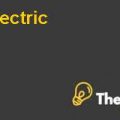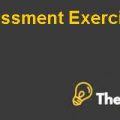Problem Statement
This case analyzes the biggest bond issue in the history of $ 300 million bonds by Disney with a maturity period of 100 years. The coupon rate offered to the bondholders was to be 7.55% and the bonds were callable bonds. This is quite rare that companies issue bonds which have a duration which is higher than the average life expectancy of individual show ever; Disney and Coca Cola have both issues such bonds with a maturity of 100 years. Although, the goal of the company is to grab profits from the high demand in the market however, the longer duration of these bonds also makes this risky for Disney. This case analyzed a number of considerations and also compares the returns of the bonds with the returns of 10 year bond and the common stock of the company.
Analysis
Question 1
The senior debentures had been issue by Disney for a total value of $ 300,000,000 in July of 1993. However, at the time of the issue no cash payments would be made and he bonds would be just issued to the bondholders. At the delivery date, the actual cash of $ 300,000,000 with a par value of $ 100. After the delivery takes place, the interest would be paid by the company to all the bondholders at the rate of 7.55% and the interest would be paid semiannually which means the interest payments would be received by the bondholders on two dates each year. If the interest is paid semi-annually then this means that the first interest payment would be made in December 1993 and the second interest payment would be made in July 1994 and so on. Finally, at the maturity date which is in 2093, the company would repay all the bondholders the total principle amount and also the last interest payment. One thing to note is that if the issuers call the bonds after 30 years then they will have to call the bonds at $ 103.02 on each bond’s par value of $ 100.
Question 2
As the bonds are priced at par value of $ 100 per bond, therefore, we have calculated the present value on the 7.55% interest rate, 6.55% interest rate and a higher rate of 8.55%. It could be seen that the interest rate which has been used by the company to price the bonds is 7.55% and it is exactly equal to 7.55% and not higher or lower than this rate of interest. The calculations could be seen in the excel spreadsheet.
Question 3
If the prevailing interest rate increased by 1% on the next day of the issue of the bonds, then the only reason for this might be that the demand might have declined and the demand of the bonds would not have been so brisk. Therefore, in order to stimulate the demand of bonds issue, the company will have increased the interest rate or the coupon rate of the bonds. Moreover, if the interest rate is increased from 7.55% to 8.55% then the new price of the bond will have to be $ 88.31 per bond. The calculations could be seen in the basic spreadsheet........................
This is just a sample partial case solution. Please place the order on the website to order your own originally done case solution.













